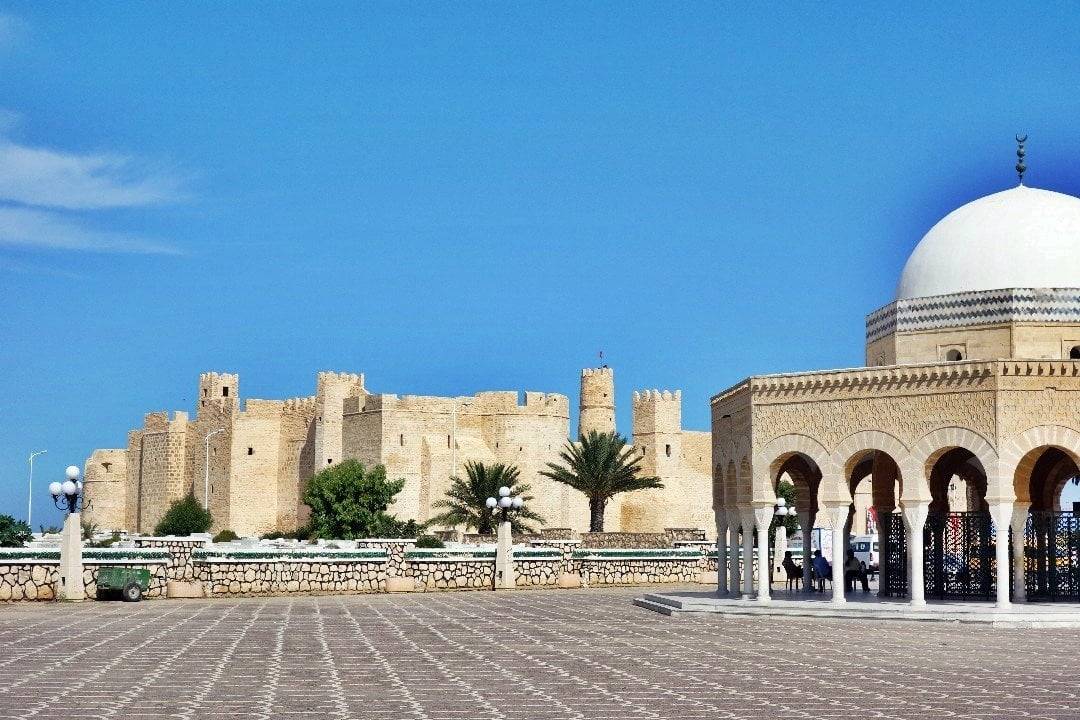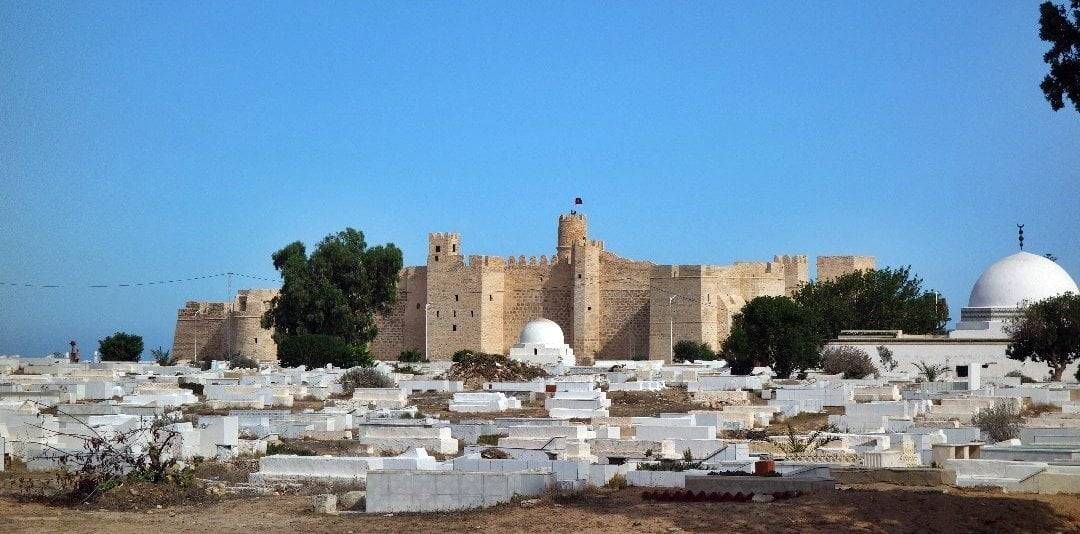A walk through Monastir’s Medina

Disclaimer: This post may contain affiliate links, which means that if you click on any of those links and make a purchase, I’ll get a small commission, at no cost to you, to help support this website.
Last Updated on November 5, 2022
Founded in 960 BC by the Carthaginians, Monastir, then called Rous Penna, was the starting point of Cesar’s conquest of North Africa. The walls and the old city (medina) you see today were built in 796 when the Arabs took control of the area. The city quickly became an important religious and military center. Especially in the 11th century after the Kairouan sacking, a lot of religious men and intellectuals moved to Monastir. After thriving for centuries, Monastir slowly declined because of constant fighting with the Christians but revived in the 16th century thanks to the Ottomans who restored the city.
Disclaimer: This post contains affiliate links, which means that if you click on any links and make a purchase, I’ll get a small commission, at no cost to you.

Monastir is also an important city for Tunisian people because it’s the place of birth of Tunisia’s first president: Bourguiba, which largely contributed to the city’s touristic boom. Monastir is a nice city to spend the day, exploring the old medina and its ribat (fort).
What to do in Monastir’s Medina
Visit Monastir’s Ribat

Monastir’s Ribat was the first one to be built in Africa and is one of the biggest ribats you’ll see in Tunisia. It’s still really well preserved and was restored in the ’70s. Ribats originally were small fortresses built by the Arabs along the borders in North Africa, it later also served to protect commercial roads and as a center for isolated Muslim communities.

Monastir’s Ribat is a maze with several passageways, levels, and rooms. The central area is often used for concerts and festivals, especially during the summer. Monastir’s Ribat also has a Nador or tower, in which you can go all the way up and get a superb view over Monastir’s Medina. From there you can also see the 9th century Grand Mosque, which unfortunately doesn’t allow visitors (unless Muslim of course). If you really want to take a look inside, try to go during prayer time, ask first if you can enter. You’ll have to respect the Muslim dress code (of course).

On the second floor, the women’s ribat has been turned into a small Islamic Art Museum. You’ll find several artifacts and pieces of art from Monastir’s Ribat but also from Kairouan.

Entrance fee: DT 7 – Open until 8 PM in summer, sooner during Ramadan (5 PM) and wintertime (5:30 PM).
Discover Tunisia’s hero: Bourguiba
Bourguiba is Tunisia’s first president, he’s also the man who fought the most to get Tunisia independent from France. He has done a lot for Monastir and Monastir is proud of being his hometown. His mausoleum is right next to the Ribat. The place can be visited (free entrance), the building, its architecture and its artwork are really nice. It’s also a small museum, you can see some objects from Bourguiba’s daily life especially his ID card, the first one delivered by the Tunisian Government.

Just in front of the Ribat, you’ll find the Bourguiba Mosque. Built in 1963, it’s one of the biggest in Monastir, it can host around 1000 people. The architectural style is classic with pink marble, gold mosaics, and carved wooden doors.
There’s also a Habib Bourguiba Museum, outside of the city center, in what used to be the summer presidential palace.
Stroll through the Sidi-El-Mézeri Cemetery

Behind the Ribat, along with the coastline, you’ll find a large cemetery. Isolated from the city development, the place seems forgotten by time. At the end of it, you’ll see a small memorial hall, for people who died for Tunisia’s independence.
If you don’t have much time to visit Monastir, you can take a day trip from Tunis.
What to do around Monastir
Enjoy some beach time

This part of Tunisia is famous for its long thin-sanded beaches and crystal clear water. The beach in Monastir is small and crowded during July and August, but just by driving a bit out of the city, you’ll find nice and peaceful beaches, some wild, some owned by the several hotels sparkled along the coast.
Take a boat ride
From the marina, you can arrange for a private boat tour along the coast and neighborhood islands. You can also just book a spot in one of the many “pirate” boats that leave daily for an excursion to Kuriat Island. The price is around 50 dinars per person everything included, it varies depending on which operator you choose.
Visit Lamta village
Nearby Lamta is a pleasant little town rich in history. It used to be an important commercial harbor during the Punic and the Roman Eras. Excavation work showed a lot of the city’s ruins and revealed Lamta’s history.

The Archaeological Museum there is worth a look, most of the artifacts and artworks found in Lamta are displayed there. In the garden, you can see several ruins especially the one of a Roman bath, and a bit further the library and the wrestling ring. Don’t miss the marble Christian sarcophagus inside the museum, a unique sight.
You’ll also find a small Ribat built in 859 by the Aghlabides. You cannot enter it but it’s a nice site to see, in the heart of the old town and its paved streets. Just in front of a nice mosque.
Organize a day trip to Sousse or Mahdia

Nearby Sousse or Mahdia make a perfect day trip from Monastir. Both are famous for their Medina, the one in Sousse is a UNESCO World Heritage site, and is one of the busiest Medinas in Tunisia. Mahdia is quieter but just as cute.
Related articles to help you plan your trip to Tunisia:
- Discovering Tunisia’s best medinas across the country
- 8 UNESCO Sites you must-visit in Tunisia
- Everything you need to know before going to Tunisia
Like it? Save it for later:










